Chinese food in China is nothing like Chinese food in America. In America, the best Chinese food is a little takeout joint that serves paper boxes full of cream cheese wontons and sweet and sour chicken. You try and fumble with some wooden chopsticks and you get a little fortune cookie at the end.
As with most things, Chinese food in China is way different than our Americanized expectations. There are no cute little paper take-out boxes, cream cheese wontons, or fortune cookies. In fact, fortune cookies first came to America from Japan.
The Chinese do love to eat, despite the severe fortune cookie shortage in their country. Going out to restaurants is a social event, where everyone shares plates and drinks a lot. Instead of asking “how’s it going?”, people ask each other “did you eat lunch?”
I’ve eaten food basically every day since coming to China. Here’s my completely non-comprehensive list of the best Chinese food you’ve (probably) never heard of.
Jian Bing (煎饼)
Jian bing is a breakfast favorite, and easily the best Chinese street food. It’s a pancake or crepe type thing with an egg cracked over it, then topped with stuff. The Shanghai version uses a kind of plum sauce, sesame seeds, cilantro, onions, spicy oil and a crispy cracker. Really, you can get anything you want inside, and people often bring their own ingredients for the jian bing makers to add. It’s rolled up like a burrito and eaten on the go.
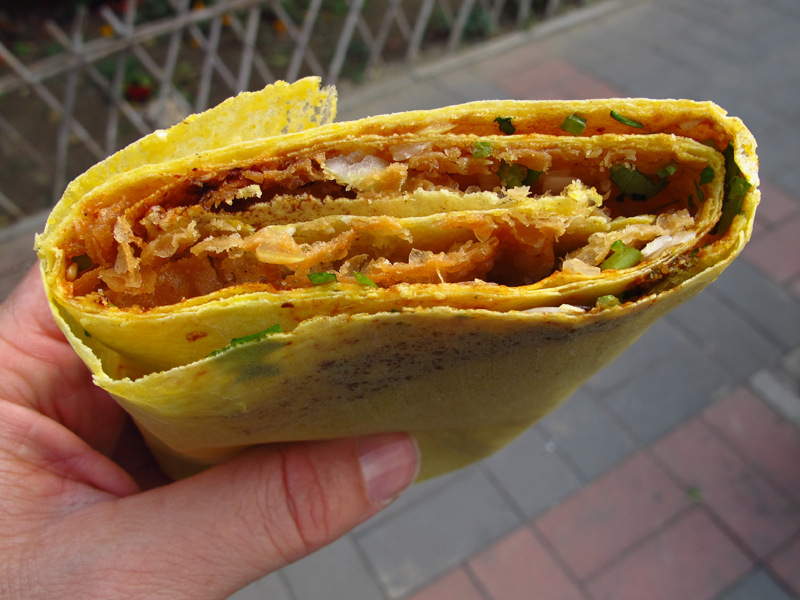
There’s an adorable couple that makes jian bing just down the street from the school where we work. It’s the one thing that makes waking up early on Saturday and Sunday tolerable. Their jian bing is the best I’ve ever had. I don’t even bother eating it from anywhere else. I think their secret ingredient is love.
Xiao Long Bao (小笼包)
Xiao long bao are a Shanghai specialty, supposedly originating in the village of Nanxiang. They are adorable little steamed dumplings filled with meat and soup. Yes, that’s right, soup. I have personally left a trail of stained shirts and filthy tables due to misadventures with xiao long bao.
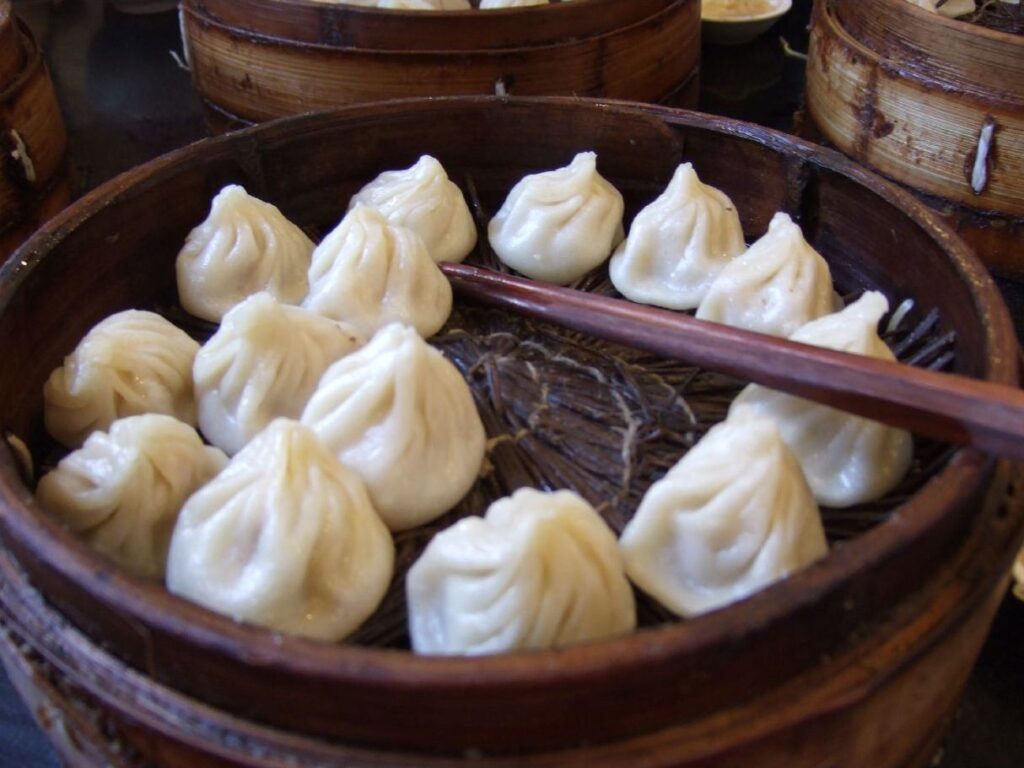
But, they’re worth the mess. Once you build up your chopstick skills, you can bite a little hole in the side of the bun and slurp out the soup. Then, dip it in vinegar and eat the rest. Or, if your xiao long bao is small enough, eat it in one bite. They make great little appetizers, and every other block seems to have a Shanghainese restaurant selling them.
Noodles (miantiao 面条)
I’m guessing you’ve heard of “noodles” before. Maybe you’ve even eaten them at some point. Chances are, you’ve had some fried noodles, or chow main, at your local Chinese restaurant. They have those in China, too. Plus, about a million other kinds.

Every street has a noodle shop of some sort. If you go in and ask for a bowl of noodles, you’ll get a steaming bowl with your noodles swimming in some sort of broth. In some places, the broth is little more than water. In the good shops, it’s a rainbow of savory flavors. There will be some meat, too. You’ll also get a variety of vegetables. Usually it’s bok choy. Once, I had some with little bits of young bamboo. It was fantastic.
Every region has its own take on the simple bowl of noodles. What you get in Shanghai will be different than in Suzhou. And, if you venture out to the countryside, your noodles will come with amazing fresh-picked vegetables and meat that was probably walking around that morning. Chinese food in China is way better in the countryside.
Lanzhou pulled noodles (Lanzhou la mian 兰州拉面)
The winner, so far, for the best noodle in China goes to Lanzhou. I’ve yet to make it to the city itself, but there are Lanzhou pulled noodle restaurants all over Shanghai.
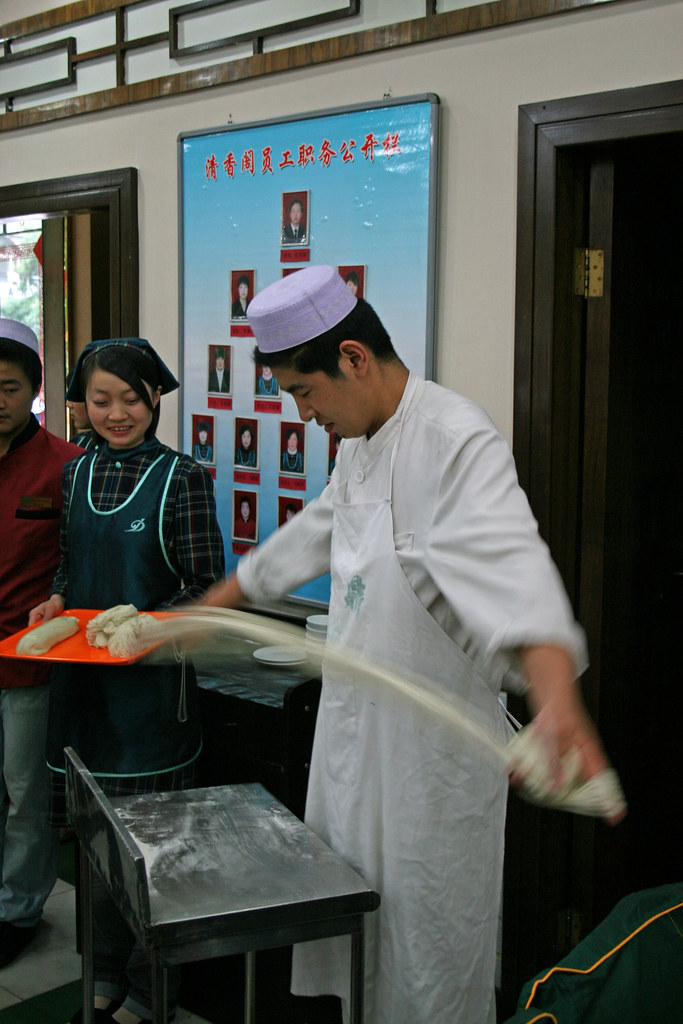
These restaurants are run by Hui people, Chinese speaking Muslims. That means no pork or alcohol. Lanzhou is located in North West China, and was once a major stopping point on the Silk Road.
The resulting cuisine is a fantastic mix of Chinese and Central Asian flavors. There’s tons of cumin and peppers and all sorts of delicious things mixed in. The noodles themselves are always hand pulled, resulting in variations in thickness and texture, but always deliciousness. The Lanzhou noodles are typically served dry (not in soup like Chinese noodles), but often come with a side of cumin-garlicy beef broth.
Baked BBQ Pork Buns ( cha siu bao叉燒餐包)
I actually think these are pretty easy to get in the Chinatowns of the world. Still, I’d never had them until we took a trip to Hong Kong. I was immediately hooked.

These are just baked buns stuffed with barbequed pork. What’s not to like about that?
The best ones I’ve had were still the first ones we tried in Hong Kong. The buns were like flaky biscuits, and they sprinkled a little bit of sugar on top. Deceptively simple, but delicious.
You can also find a steamed variety, but honestly, if you’re going to have barbequed meat buns, you might as well get them baked.
Hot Pot (huo guo 火锅)
It’s usually annoying when people say “you haven’t blah blah blahed until you’ve blah blah blahed,” but you haven’t eaten Chinese food until you’ve eaten hot pot. You sit around a special table, and a large boiling pot of broth is placed in the middle. Then you and your friends dump in meat, vegetables or whatever else you want while trying not to scald yourselves.

We ate hot pot our first night in China. We’d just gotten off the plane, went through immigration and took a long long taxi ride to our Airbnb. The hostess arrived with three of her friends, and then invited us to go out to eat with them. We were woozy and jet lagged, and honestly, probably not very good company. But the food was delicious.
That night we tried a few things that would not go over so well in the States. Our hosts fed us mountains of tripe, duck’s blood tofu, and, my personal favorite, pig’s brains.
Don’t worry. You don’t have to eat pig’s brains in your hot pot. Most of the time, the meat is just pork or lamb. Either way, it’s delicious, and a must do experience in China.
How to order Chinese food in China if you don’t speak Chinese…
The problem comes with knowing how to order Chinese food in China. Smaller restaurants don’t have English menus. Even if you know a few Chinese characters, food is often given long poetic names that don’t really make sense if you don’t already know what it is.

You could just randomly point at something, which I’ve done before, but you might end up with just a plate of vegetables or some pig’s brains. Luckily, there are a lot of places that have picture menus. You just point to something that looks good and say “wǒ yào zhè ge,” which means “I want this.”
Waiters in China aren’t like waiters in the U.S. You have to get their attention when you need them. They won’t come up to you unless you flag them down. You won’t have your meal interrupted every five minutes by someone pretending they care how your food is. You also don’t leave a tip.
Here are some useful phrases for eating out (and here’s a pronunciation guide ):
- fú wù yuán 服务员 – waiter. Just shout this out if you need the waiter to come to your table
- diǎn cài 点菜 – to order food.
- wǒ yào zhè ge 我要这个 – I want this. As I said above, just point at the menu and say this phrase.
- mǎi dān 买单 – to pay the bill. Say this when you want the check.
- hái yǒu ma? 还有吗? – anything else? Waiters say this when you’re done ordering. If there’s nothing else, just reply with “méi yǒu” which, in this case, means “no”.
Chinese food at home
During the COVID-19 quarantine, we couldn’t go out to any restaurants. We could, in the initial phases at least, go get groceries. I started trying to cook Chinese food, with varying degrees of success.
If you want to start cooking Chinese food, I highly recommend the Woks of Life. They’ve got a ton of great recipes. There’s also a section that goes over a lot of common Chinese ingredients. That’s been a lifesaver for me trying to navigate the thousands of spices and sauces in the grocery stores here in Shanghai.
My list is only a small sampling, a tasting menu if you will, of the variety of delicious food in China. It doesn’t include things like Kung Pao Chicken or Peking Duck, which are common in U.S. Chinese restaurants, but done much better here.
I’d even go so far as to say that American Chinese food is a lot like American attitudes towards China as a whole. We know a simplified, blander, and unhealthy version of China. The reality of China (like the food) is vast, complex, and much more interesting. Time for lunch.
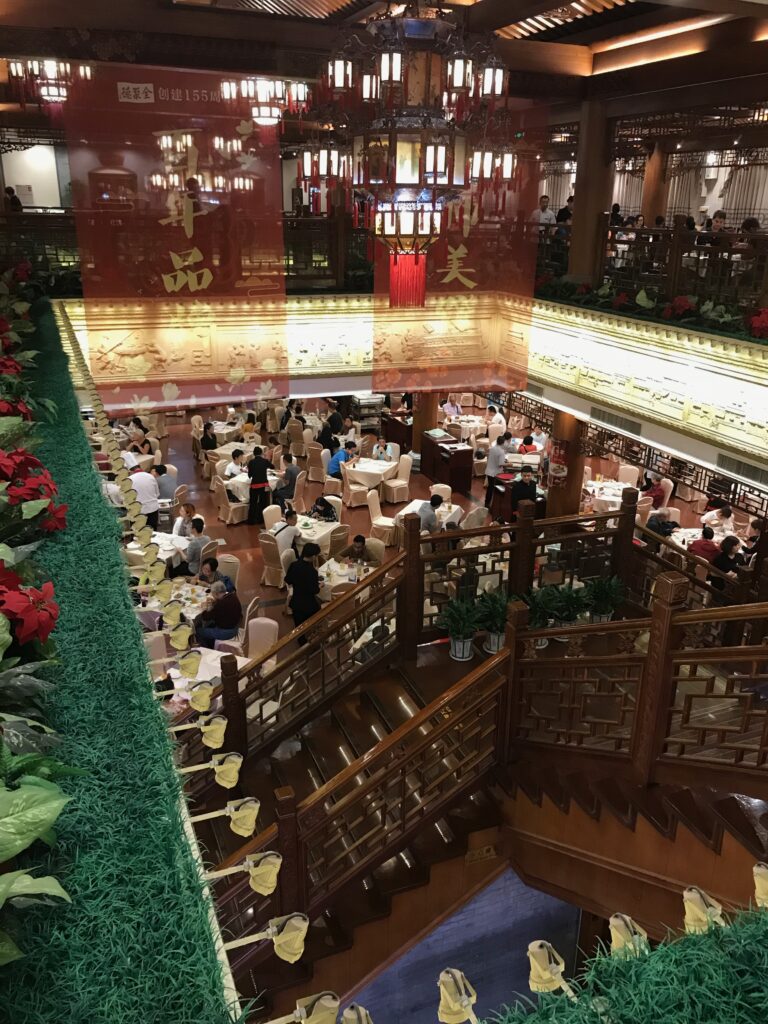
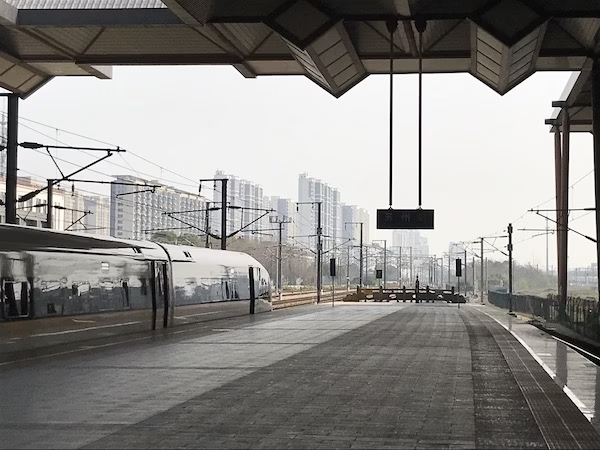
Need Train Tickets in China?
China’s high speed rail network is fast and efficient, but it’s difficult for non-Chinese citizens to get tickets. Fortunately, Trip.com makes buying train tickets as hassle free as traveling through China can possibly be. Click the link below to get your Chinese train tickets. If you buy your train tickets using the link, I’ll receive a small commission and you’ll feel good knowing you’ve helped out an independent blogger.
